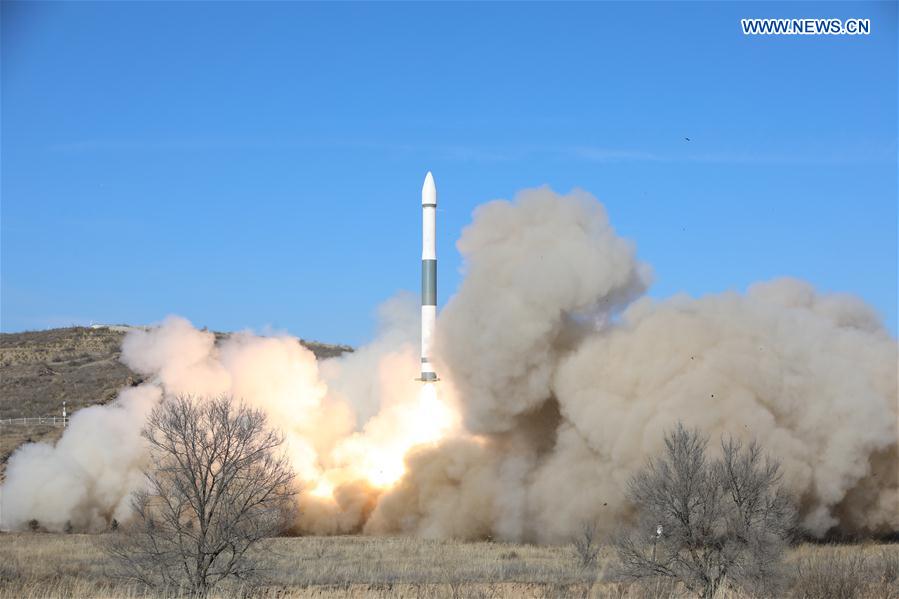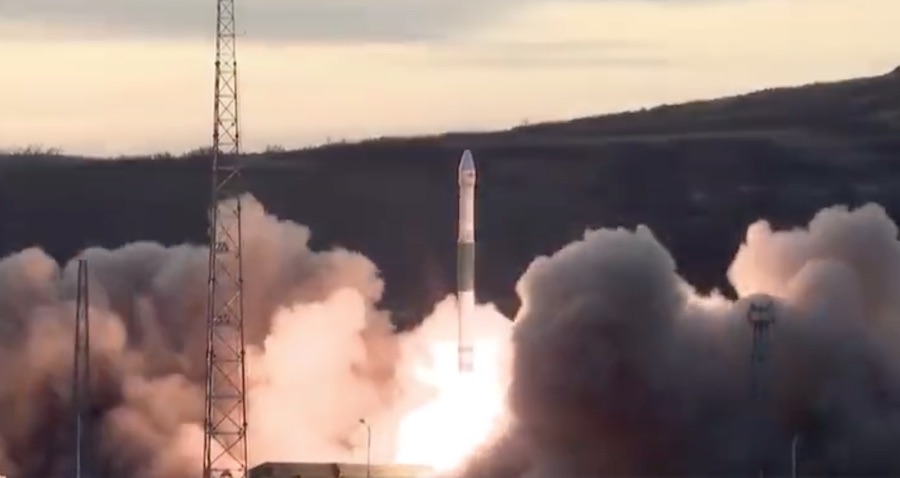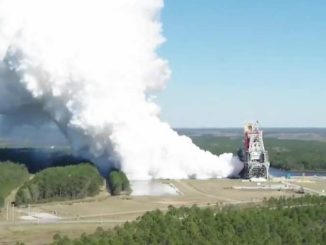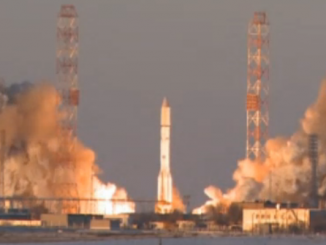
Two solid-fueled Kuaizhou 1A rockets fired into orbit from the same spaceport in northern China Saturday, demonstrating a further advance in China’s aim for a quick-response, on-call satellite launch capability.
The back-to-back Kuaizhou 1A missions both lifted off from the Taiyuan space center in northern China’s Shanxi province, using separate road-mobile transporters as launch pads.
The rockets successfully carried a total of seven small satellites into orbit for Earth-imaging, ship tracking, and experimental communications missions, according to China’s state-run Xinhua news agency.
Saturday’s rapid-fire launches from Taiyuan marked the sixth and seventh flights of Kuaizhou 1A rockets since then launch vehicle model debuted in 2017, and the fourth and fifth Kuaizhou 1A flights this year. Last month, Chinese teams performed two Kuaizhou 1A launches in a four-day period at the Jiuquan launch base in northwestern China.
All seven of the Kuaizhou 1A satellite delivery flights to date have been successful.
Powered by three solid-fueled booster stages and a liquid-fueled orbital injection engine, the Kuaizhou 1A rocket is one of several new Chinese smallsat launchers. It’s managed by Expace, a commercially-oriented subsidiary of the China Aerospace Science and Industry Corp., the biggest Chinese state-backed aerospace contractor. The light-class Kuaizhou 1A rocket is capable of injecting 440 pounds (200 kilograms) of payload to a 435-mile-high (700-kilometer) orbit.
Kuaizhou means “speedy vessel” in Chinese, a name indicative of its purpose as a satellite launcher that can be readied for liftoff in a short time period. The rocket — likely derived from Chinese ballistic missile technology — launches from a road-mobile transporter.
The launches Saturday were the first Kuaizhou 1A flights from Taiyuan. All previous launches by the solid-fueled booster originated from Jiuquan.
The first Kuaizhou 1A flight Saturday lifted off from Taiyuan at 0255 GMT Saturday (10:55 a.m. Beijing time; 9:55 p.m. EST Friday) with the Jilin 1 Gaofen 02B Earth observation satellite, according to Xinhua.
The Jilin 1 Gaofen 02B spacecraft joins a fleet of commercial Earth-imaging stations owned by Chang Guang Satellite Technology Co. Ltd. The new satellite is the 15th spacecraft launched in the Jilin 1 fleet since 2015, and will be capable of collecting imagery with a resolution of better than 2.5 feet (75 centimeters).
The Kuaizhou 1A rocket delivered the Jilin 1 Gaofen 02B satellite into a 332-mile-high (535-kilometer) orbit inclined 97.5 degrees to the equator.
Less than six hours after the first launch of the day from Taiyuan, another Kuaizhou 1A booster fired off a different launch pad at 0852 GMT (4:52 p.m. Beijing time; 3:52 a.m. EST) with six small satellites on-board.

The six payloads aboard the second Kuaizhou 1A flight Saturday were deployed in orbit around 310 miles (500 kilometers) above Earth, on a track inclined 97.4 degrees to the equator.
Two privately-developed satellites for Beijing-based HEAD Aerospace launched on the second Kuaizhou 1A flight Saturday will provide environmental monitoring, asset supervision, emergency communication, and ship and aircraft tracking services. The 100-pound (45-kilogram) HEAD 2A and 2B satellites are the first craft in HEAD Aerospace’s Skywalker constellation.
The second Kuaizhou 1A launch also delivered the Spacety 16 and 17 small satellites to orbit for Spacety Co. Ltd. The Spacety payloads are “medium-resolution micro-nano remote sensing satellites that are mainly used for disaster prevention, maritime applications, agricultural remote sensing and polar environment monitoring,” according to Xinhua.
Two experimental data relay nanosatellites named Tianqi 4A and 4B were also launched for Guodian Gaoke, another Beijing-based company, Xinhua said.
Email the author.
Follow Stephen Clark on Twitter: @StephenClark1.



